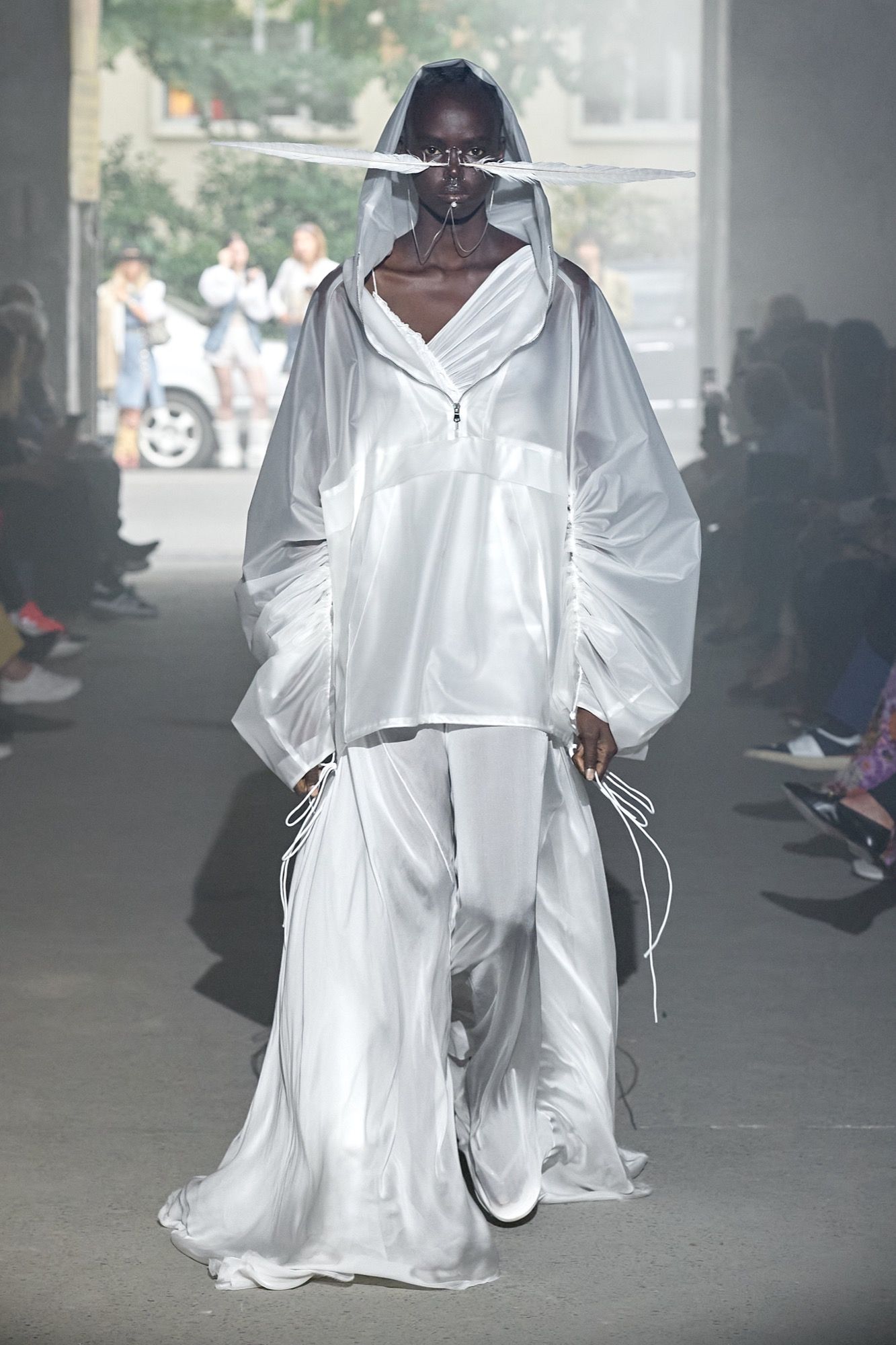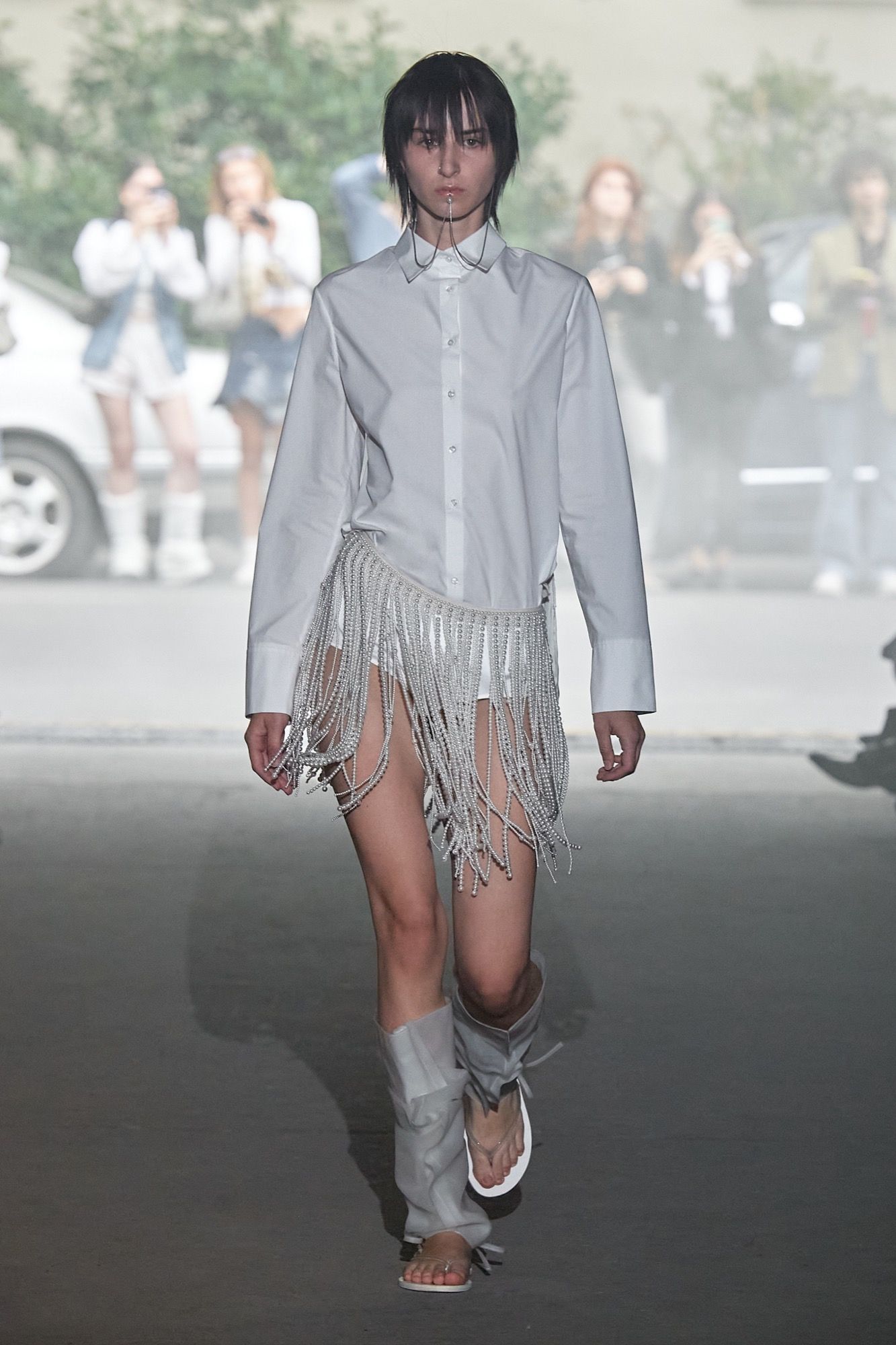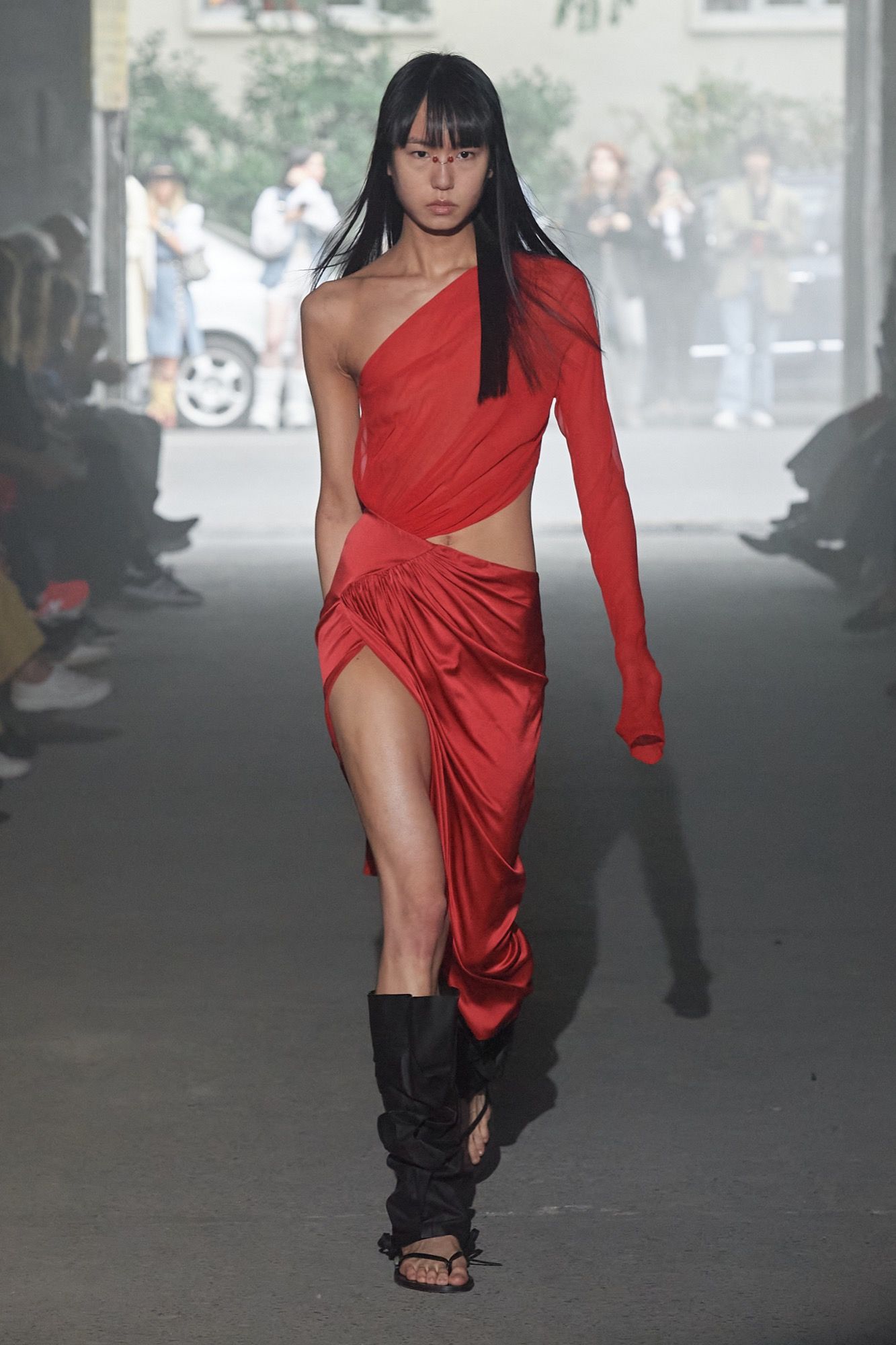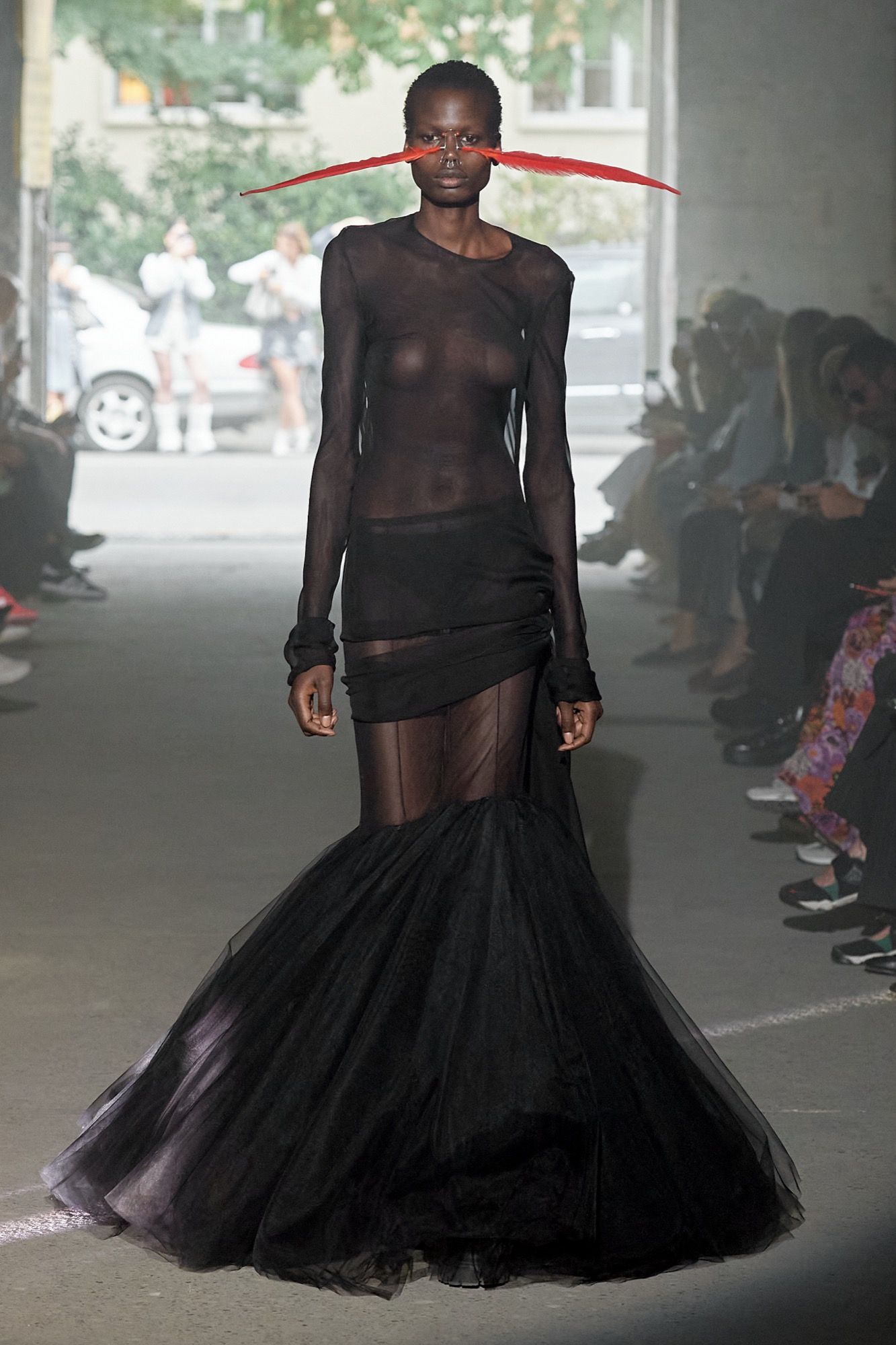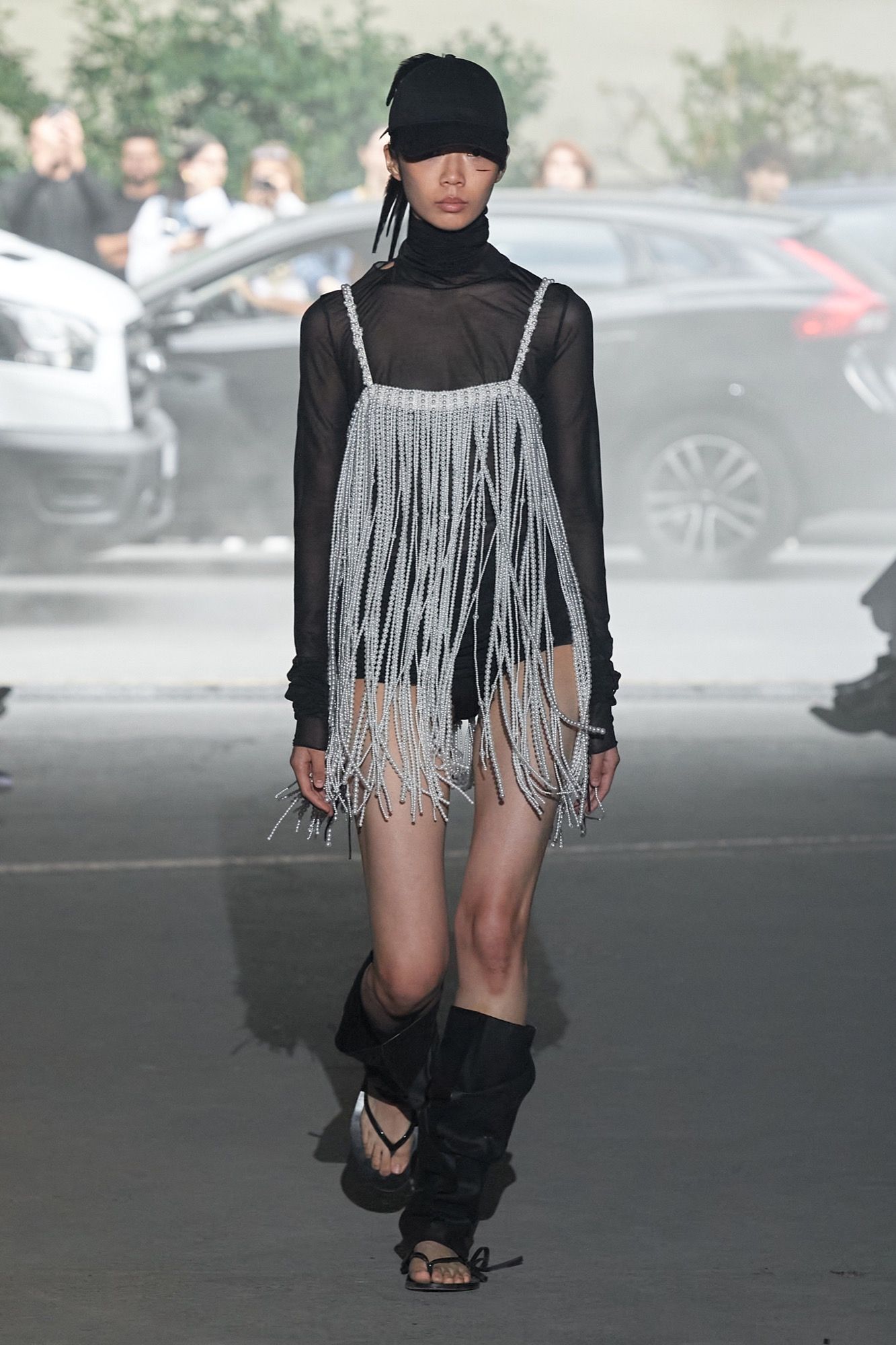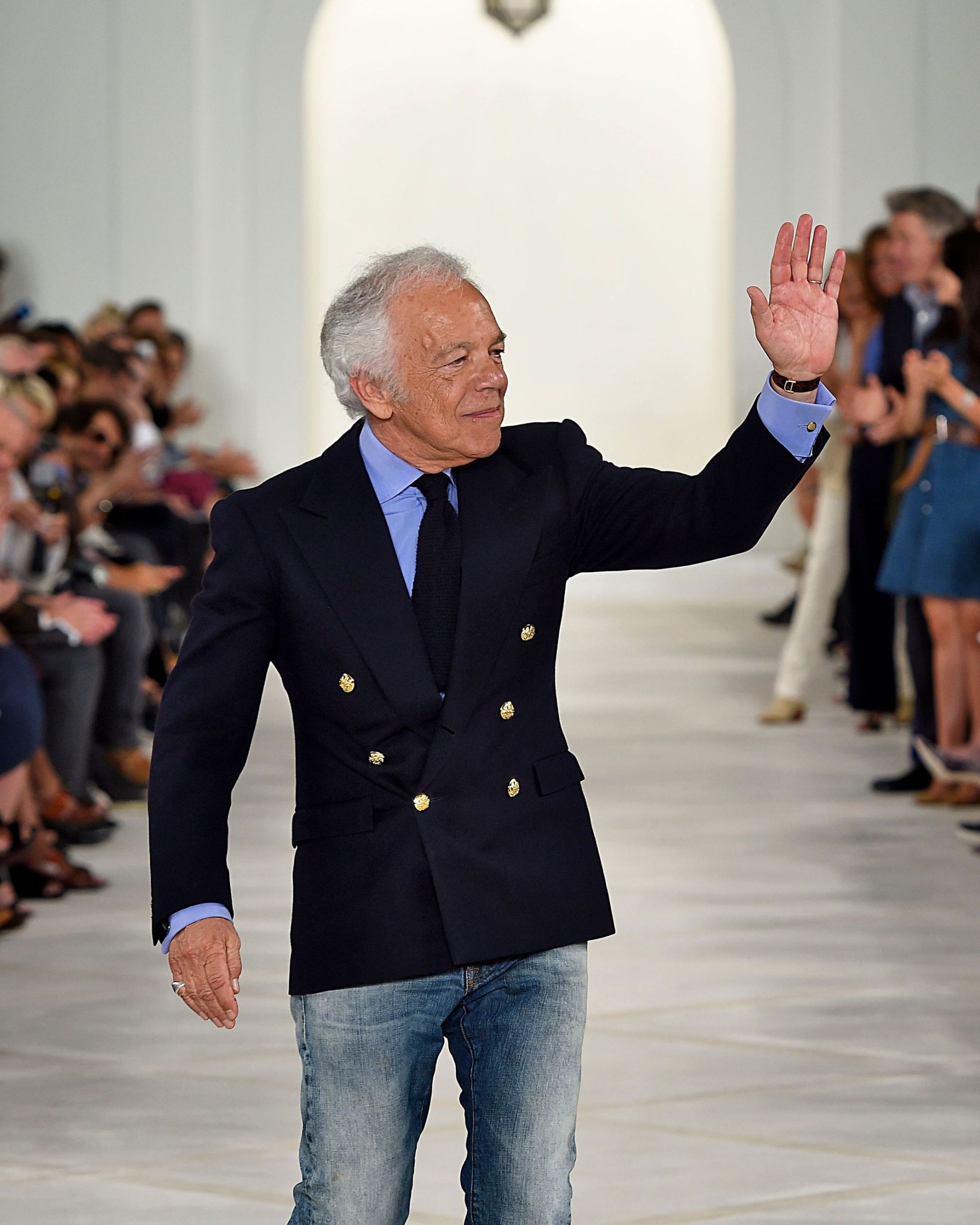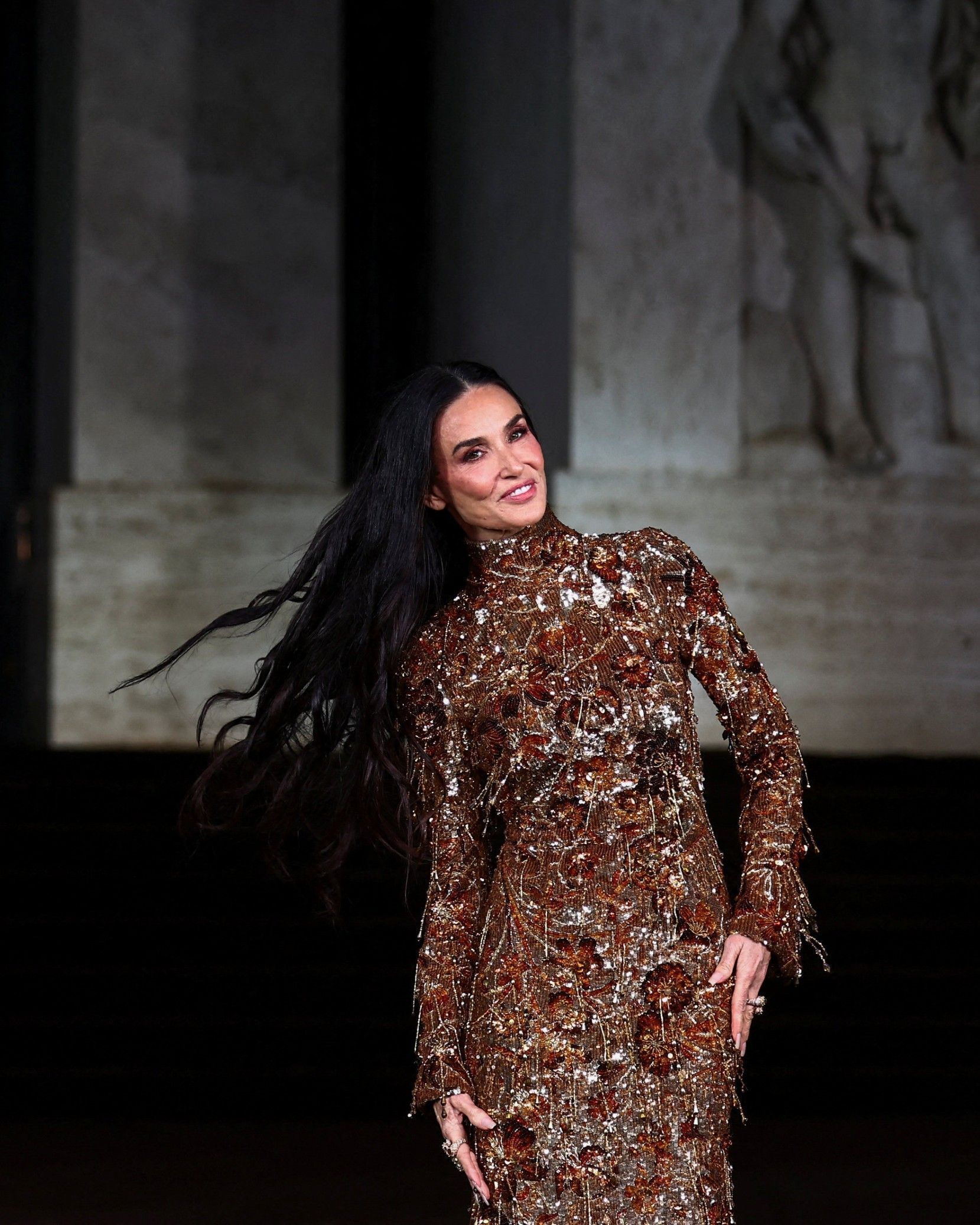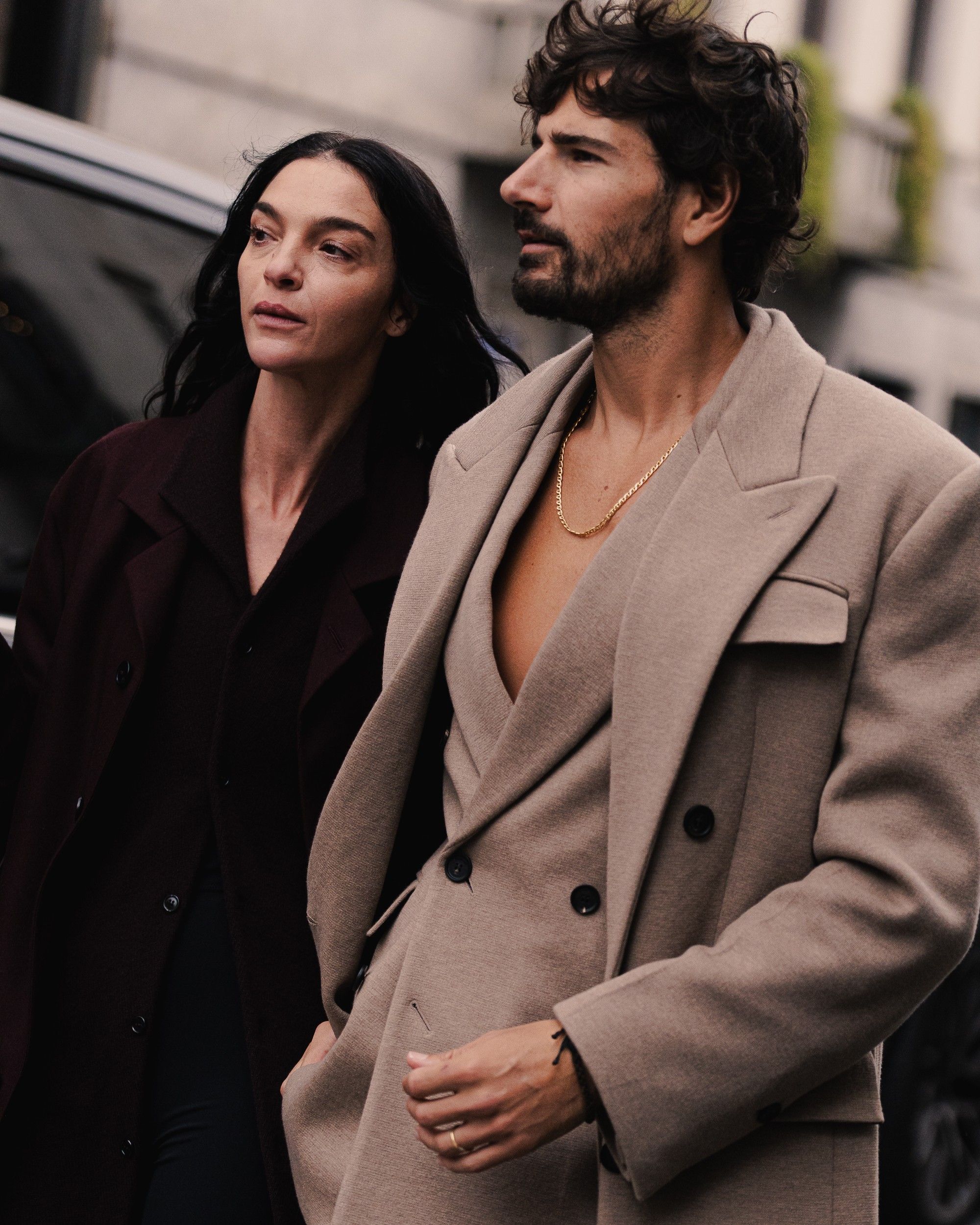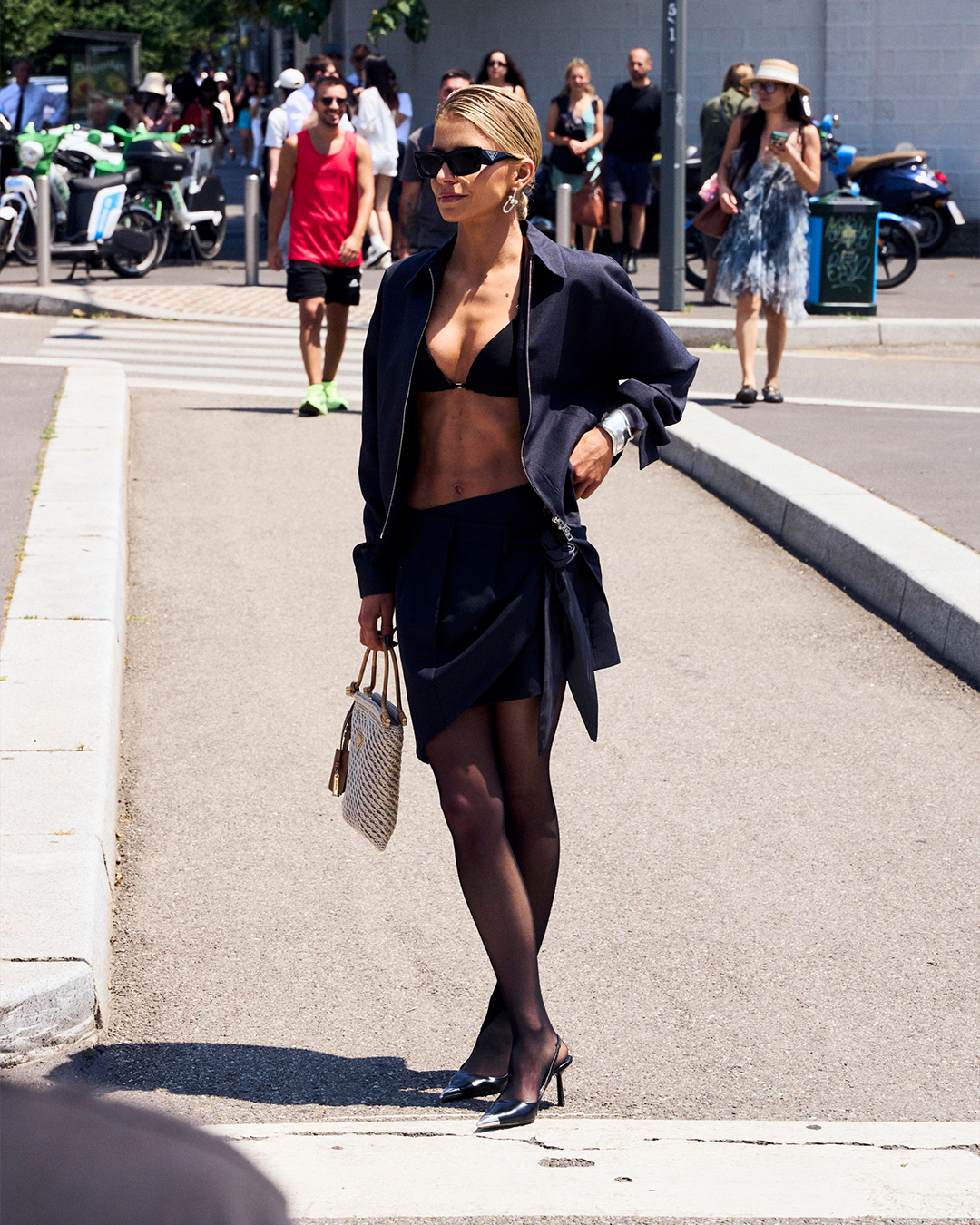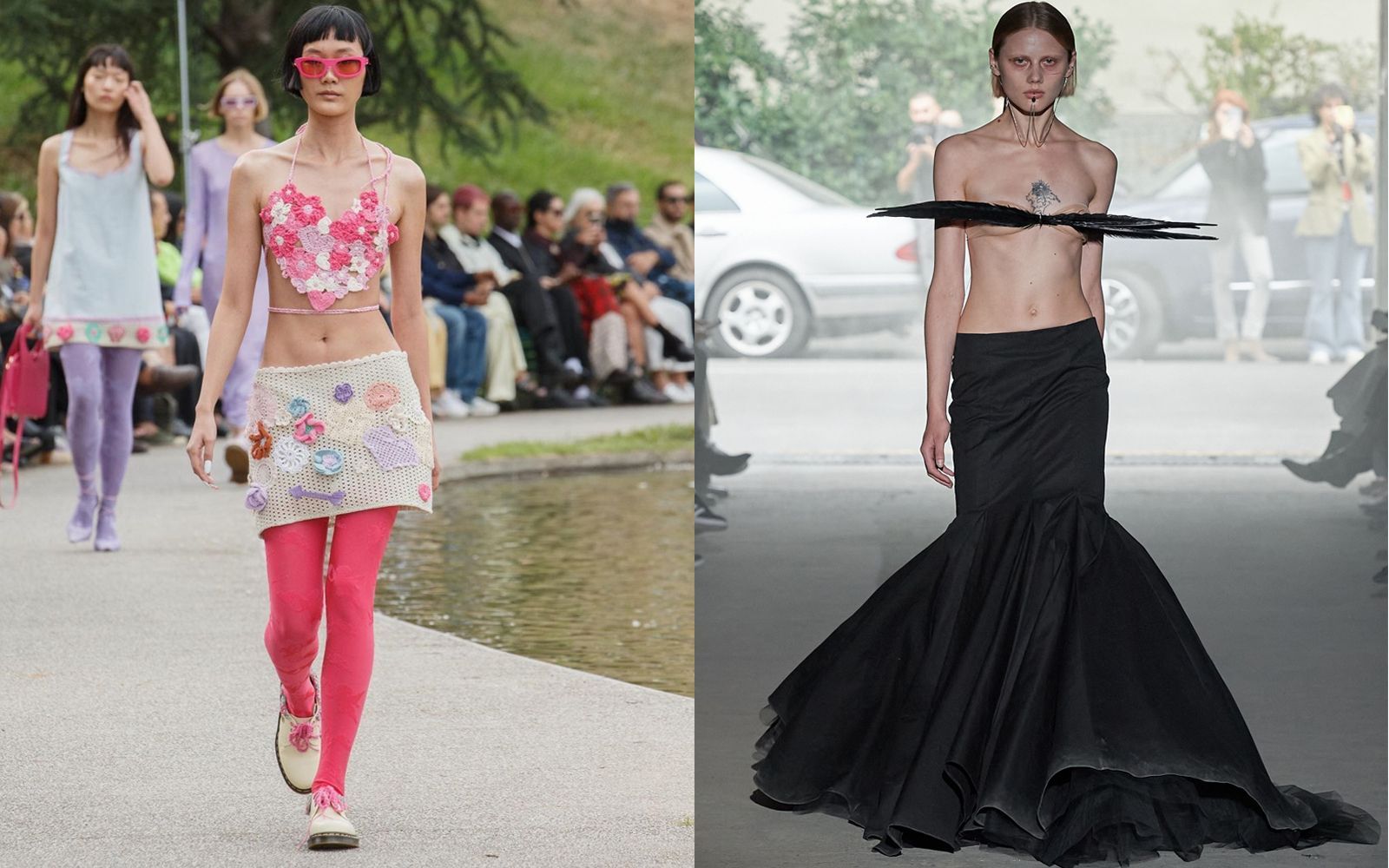
The queer fiction of Marco Rambaldi and AC9 Crochet and feathers to talk about bodies
Stereotypes and prejudices, paths and opportunities, reality and fiction: that of and, the conjunction that tends by its nature to converge several things on the same plane of thought, is a story of verbal abuse more often than not. A bit like what has been done in recent years with the word inclusiveness: vagueness and reassurance have been the weapons with which this term has written pages of articles and marketing campaigns, leaving a great void in those who would have liked to return a more authentic narrative to this word so available to confrontation. This is what, in their way, Marco Rambaldi and AC9 did during this Milan Fashion Week.
Where a queer narrative served as a backdrop for the aesthetic imaginaries of both Italian brands, it was their grammar - draperies, movements, materials, and colors - that made them profoundly different. At Marco Rambaldi's, trans models and different sizes walked the runway, while at AC9's, gender was a kind of condemnation to escape from to freely explore the shadowy areas of bodies in general. The colors, hearts, and crochet are the poetic manifesto by which Rambaldi reflects on a form of a sentimental dichotomy that has taken the name Odi et amo. What might look like garments taken from the set of Euphoria express the urgency to set straight issues that have been put off for too long. And, in a park on the outskirts of Milan (Alfa Romeo Industry Park) covered by a gray sky, smartphones were embedded in a sky-blue and white knit skirt to make (re)emerge, perhaps, a sense of community of which the fashion system is deficient. Rambaldi is a designer who, despite being crushed by widespread structural competition from the rhythms of large groups and fast fashion, has managed to create his target audience unwilling to give in to the comfort of indifference.
From AC9, however, the atmospheres were decidedly more dramatic: black, white, and red were the hues used to clothe bodies with a power that could liberate them from the suffocating violence of stereotypes. Lace, canvas, silk, tulle, satin, biolactice, pearls, crystals, and feathers constructed silhouettes made meaningful by decorative, low waists, structured shoulders, mermaid skirts and dresses, and lingerie that was not subdued by clothing. Alfredo Cortese is a designer who, like Marco Rambaldi, went from a stage of mentorship to total creative independence with his fashion label. AC9's SS23 was a collection in which feathers, placed along the forehead to cover the eyes or along the chest to cover the breasts, express a sense of the tension that bodies, in their continuous and obsessive aesthetic re-proposition, continually find themselves experiencing. The sensuality told by the bodies staged by AC9 is a dramatic vindication transliterated into a sensuality incubated by Cortese's adoptive father, Alessandro dell'Acqua. Marco Rambaldi's and AC9's collections merely weave the strands of a manifesto of resistance against a mainstream luxury that tends toward the narrative of a disguised form of oppression instead of a pure form of individual liberation and expression. There is no match to be made between those who, needless to point out, work on conjunctions.










































